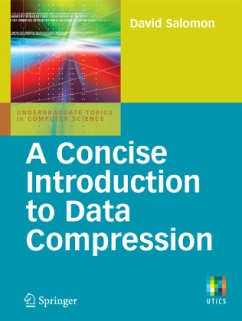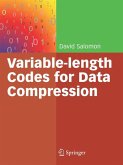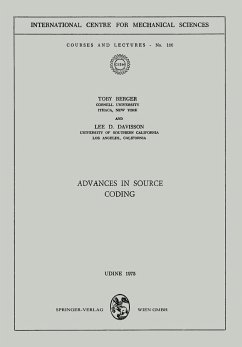Compression is an option naturally selected when faced with problems of high costs or restricted space. This book offers readers a succinct and reader-friendly foundation to the most important topics in the field of data compression.
Divided into two parts, Part I presents the basic approaches to data compression and describes a few popular techniques and methods that are commonly used to compress data. The reader discovers essential concepts, such as variable-length and prefix codes, statistical distribution and run-length codes. Part II concentrates on advanced techniques, such as arithmetic coding, orthogonal transforms, subband transforms and Burrows-Wheeler transform.
Complete and clear, this book will be the perfect reference for advanced undergraduates in computer science and requires a minimum of mathematics. An author-maintained website provides readers with errata and auxiliary material.
Divided into two parts, Part I presents the basic approaches to data compression and describes a few popular techniques and methods that are commonly used to compress data. The reader discovers essential concepts, such as variable-length and prefix codes, statistical distribution and run-length codes. Part II concentrates on advanced techniques, such as arithmetic coding, orthogonal transforms, subband transforms and Burrows-Wheeler transform.
Complete and clear, this book will be the perfect reference for advanced undergraduates in computer science and requires a minimum of mathematics. An author-maintained website provides readers with errata and auxiliary material.
From the reviews:
"This book on data compression ... can be considered an introductory one into a part of coding theory. ... can be used by students who want to understand a general description of data compression and some of the important themes in this domain. ... In each part exercises are provided, and solutions for them can be found at the end of the book. ... Overall, the book ... is particularly suitable for undergraduate students to be used for laboratory purposes." (Nicolae Constantinescu, Zentralblatt MATH, Vol. 1147, 2008)
"This book provides an overview of compression methods in general, and goes into a fair amount of detail for some specific algorithms in use. ... On the whole, this could be a useful book for a short course on compression at the undergraduate level, and would provide students with a taste for the material." (Jeffrey Putnam, ACM Computing Reviews, December, 2008)
"In the present book, multiple explanations and examplesare used to clarify and expose different and important concepts, such as entropy and variable length coding. The book also includes a numerous program code snippets. These programs are clearly written and so should be easily understood by students. The book is excellent and fills the stated goal. When I am going to teach data compression again, I will most definitely use A Concise Introduction to Data Compression as a textbook for the class." (Ville Hautamäki, SIGACT News, April, 2012)
"This book on data compression ... can be considered an introductory one into a part of coding theory. ... can be used by students who want to understand a general description of data compression and some of the important themes in this domain. ... In each part exercises are provided, and solutions for them can be found at the end of the book. ... Overall, the book ... is particularly suitable for undergraduate students to be used for laboratory purposes." (Nicolae Constantinescu, Zentralblatt MATH, Vol. 1147, 2008)
"This book provides an overview of compression methods in general, and goes into a fair amount of detail for some specific algorithms in use. ... On the whole, this could be a useful book for a short course on compression at the undergraduate level, and would provide students with a taste for the material." (Jeffrey Putnam, ACM Computing Reviews, December, 2008)
"In the present book, multiple explanations and examplesare used to clarify and expose different and important concepts, such as entropy and variable length coding. The book also includes a numerous program code snippets. These programs are clearly written and so should be easily understood by students. The book is excellent and fills the stated goal. When I am going to teach data compression again, I will most definitely use A Concise Introduction to Data Compression as a textbook for the class." (Ville Hautamäki, SIGACT News, April, 2012)








